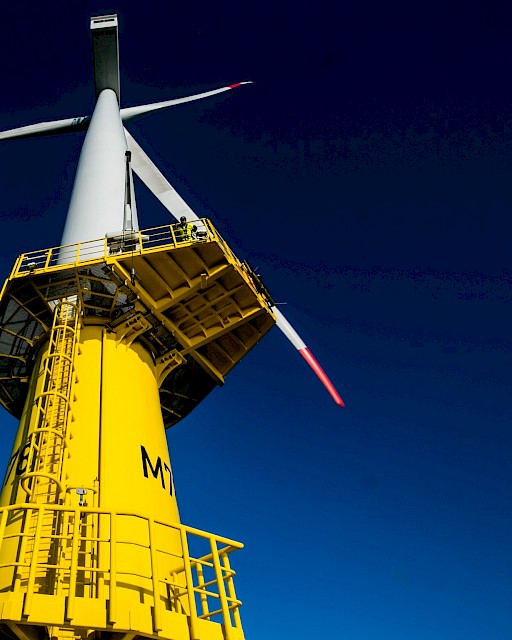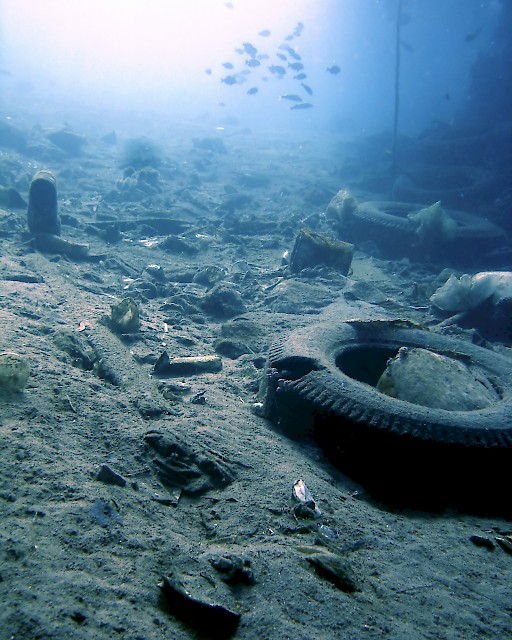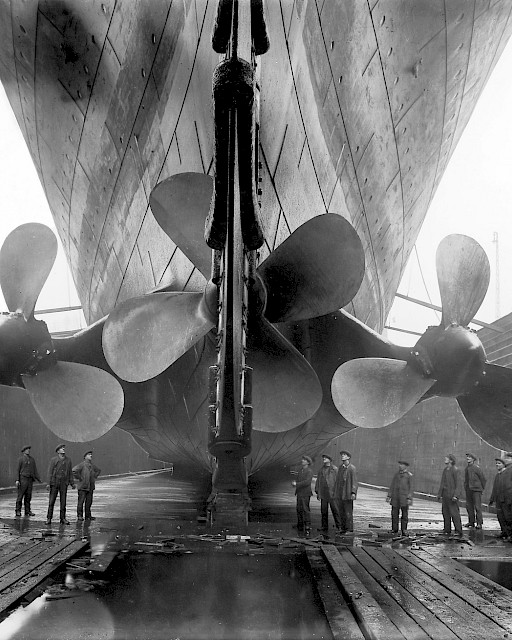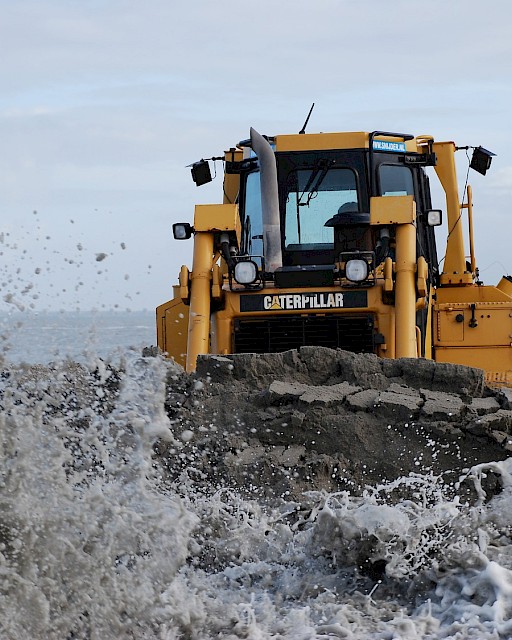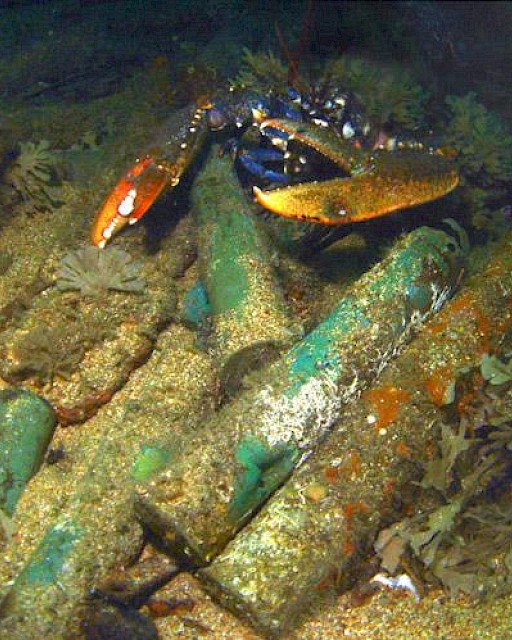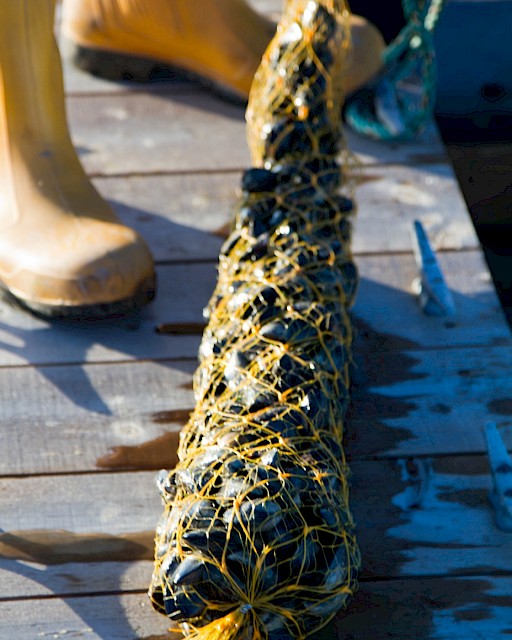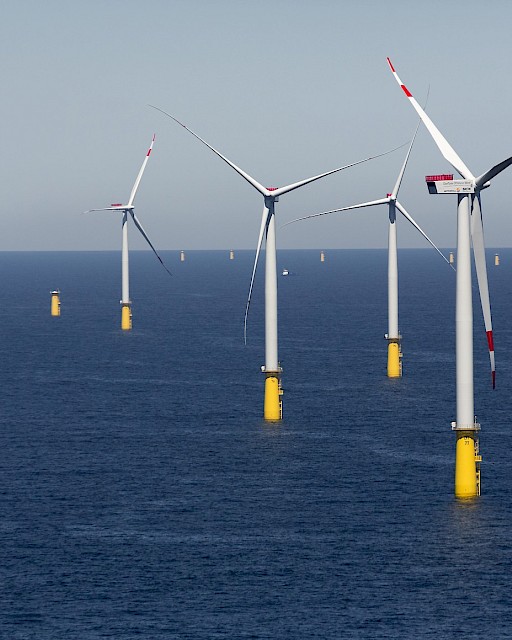Dumped Chemical & Conventional Munitions

Following World Wars I and II large amounts of munitions were dumped in the OSPAR Maritime Area. Dumped munitions included conventional munitions such as bombs, grenades, torpedoes and mines as well as phosphorus incendiary devices and chemical munitions containing, for example, mustard gases. Dumped chemical and conventional munitions are causing environmental and safety concerns in many parts of the world, including in the OSPAR Maritime Area. Historical records on the quantities of munitions dumped and their locations is limited and of dubious accuracy, however OSPAR has collected the best available information on the sites including their estimated location and contents, where known.
Encounters with Munitions
Munitions encounters are not restricted to areas surrounding dumpsites and are widespread in some areas such as the Channel and southern North Sea. Reports of encounters are collected centrally, in line with OSPAR Recommendation 2010/20, and presented in the OSPAR Data Portal. There are approximately 900 encounters reported each year, although increased reporting has been noted following accidents with munitions. Of these more than 50% are due to entanglement with fishing nets. There is no obvious trend in the number of encounters reported over time.
What is the problem?
Encounters with conventional or chemical munitions pose a great threat to human health, as well as a potential threat to aspects of the marine environment. In 2005, three fishermen lost their lives in the southern part of the North Sea when a World War II bomb exploded on board their fishing vessel after having been hauled aboard in their nets.
Chemical agents are composed of a variety of substances. Potential for persistence, bioaccumulation and/or toxicity (PBT) is of particular concern in the marine environment. Marine dumped chemical munitions react differently in water depending on the agents they contain. Nerve agents and many other agents hydrolyze, or breakdown and dissolve once they come into contact with water, and are therefore rendered harmless in a relatively short period of time. Mustard gas, however, is insoluble in water and most injuries have occurred when fishermen have come into contact with mustard gas. Phosphorus devices also present long term problems. If disturbed, these positively buoyant devices may float to the surface and represent a real risk to the seafarers and to the general public should they be washed ashore.
Environmental concerns
Of chief concern from a chemical perspective in the marine environment are discarded weapons containing organo-arsenic agents, such as Clark and Adamsite, as well as mustard gas (sulphur and nitrogen) and organo-phosphorus agents. Arsenic compounds will partition to marine sediment and can be toxic to some marine organisms.
Noise and pressure impacts from underwater spontaneous and disturbance-induced explosions include auditory damage for marine mammals, injury and death for marine organisms. Deliberate explosions during disposal can also contribute to the pressure. Health and safety issues from human encounters with munitions during fishing, shore-based activities and dredging can occur through skin contamination and inhalation as well as serious injury or death resulting from explosion.
Implications
Dumped munitions, and in particular the disturbance of dumped munitions by seabed activities, is an important issue and should be addressed. It is essential that details of the locations of all munitions dumpsites, and areas where clusters of encounters are detected on the seabed be identified. There are serious safety risks associated with the clean-up of dumpsites, as well as increased risk of dispersing hazardous substances. The most common management practice is to leave munitions on the seabed and allow them to disintegrate naturally. However, where clusters have been identified Contracting Parties should consider whether any other management options are appropriate. The decision to permit marine-based activities such as sand and gravel extraction, pipe and cable laying and windfarm construction should consider information about the location of known dumpsites and the density of munitions encounters. Where appropriate, risk assessments should be carried out.

